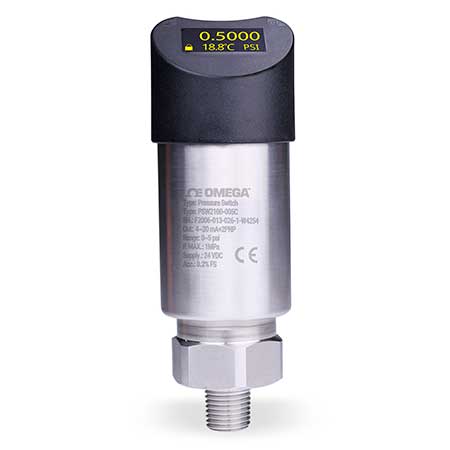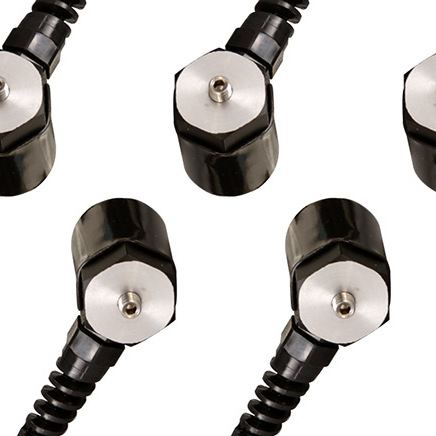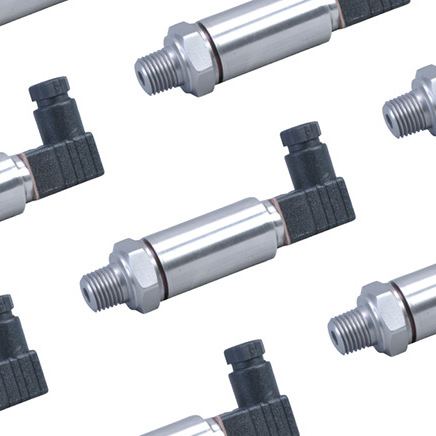A pressure switch consists of a sensing component and an electrical switch. The switch opens and closes a contact at a specific pressure referred to as the set point. The set point may be fixed or adjustable. Selecting a pressure switch with a switch point in the proper operating pressure range is important to ensure accuracy and longevity. The precise features and capabilities depend on the type of pressure switch.
Types of Pressure Switches
There are two basic types of pressure switches: electromechanical and solid state. Electromechanical pressure switches employ several types of sensors. The attributes of the sensor demarcate the relative accuracy and longevity of the switch and include the following types:
- Diaphragm switches employ a weld-sealed metal diaphragm to activate the switch. They have an operating pressure up to 150 psi and an accuracy to ± 0.5%.
- Bourdon tube switches use a weld-sealed bourdon tube for switch actuation. Operating pressure ranges from 50 to 18,000 psi and accuracy is to ± 0.5%.
- Diaphragm piston switches are equipped with an elastomeric diaphragm which acts on a piston. The piston then actuates the switch. Their operating pressure is from vacuum to 1600 psi and accuracy is to ± 0.2%.
- Piston switches employ a piston to directly activate the switch. Their operating pressure is to 12,000 psi and their accuracy is to ± 0.2%.
- Differential pressure switches may have a diaphragm, metallic or elastomeric sensor. They have two pressure ports, one for high and low process pressure. The sensor detects the pressure difference between two sources and actuates the switch.
Solid state pressure switches may have one or more switch points. They not only open and close the pressure switch circuit but include digital displays and provide analog or digital output. Most current models are fully programmable and can interface with a PLC or computer. Solid state pressure switches have a broad range of operating pressures and frequency response. They are highly resistant to shock and vibration with an accuracy to ±0.25%. In comparison to electromechanical pressure switches, they have much longer longevity.
Applications for Pressure Switches
Pressure switches are used in a large number of industries. They are widely used in the industrial control of equipment such as press machines, plastic molding injection and welding machines. Hydraulic and pneumatic pressure switches control the air bellows in trucks and brake pressure in trains. Industrial pressure switches are also employed in numerous automotive applications, for example, monitoring engine oil, power steering and transmissions. Medical equipment such as oxygen delivery systems use pressure switches to monitor the pressure of incoming gas.
The type of housing used for a pressure switch may determine whether or not it is acceptable for use in specific applications. Some pressure switches do not have housings. They are most often used where space or cost are major concerns. Housings are available in a variety of materials to withstand harsh environments where they may be exposed to chemicals or corrosives. Explosion proof pressure switches are equipped with heavy housings to prevent ignition where flammables are present. These are most commonly used in the oil and gas industries.
What is Deadband?
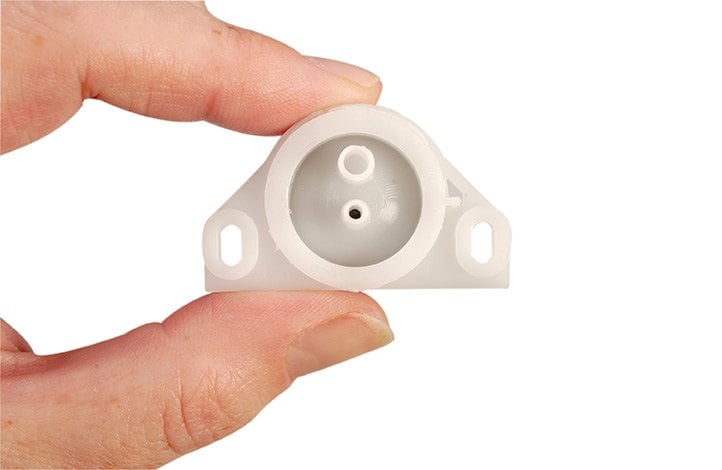 Pressure Switch
Pressure Switch
Deadband is the difference between the set point and the point where the switch re-actuates. To calculate the deadband, you must verify the increasing and decreasing pressure set points. First, using an ohmmeter or digital multimeter, confirm that the pressure switch’s contact settings are correct for “Normally Closed” (NC) or “Normally Open” (NO). Connect the terminal to the NO circuit and read the data display to verify that it is the normally open circuit. Increase the set point until the contacts reverse and the meter displays the increasing pressure set point. Then, beginning at the highest set point, decrease the setting from NC to NO. The meter will display the decreasing pressure set point. Subtracting the increasing pressure set point from the decreasing pressure set point will provide the deadband.
Deadband can be fixed or adjusted over a percentage of the complete pressure range. Bourdon tube and diaphragm switches typically have narrow deadbands, while piston switches have broad deadbands. Solid state pressure switches can be adjusted to 100 percent of their entire range. The dead band setting plays an important role in a system by helping prevent rapid switching. This can detrimentally effect what the pressure switch is controlling and wear the electrical contacts.
Adjustable Deadband Pressure Switches
 Digital Pressure Switch
Digital Pressure Switch
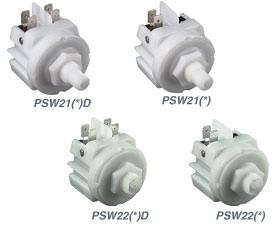 Pressure and Vacuum Switches
Pressure and Vacuum Switches
Omega’s PSW20A and PSW20B pressure switches are high sensitivity, single pole switches that can be used as vacuum or differential pressure switches. They are for use with clean, dry, non-corrosive gas within a temperature range of -30 to 65°C. Set point accuracy is ±10% at 70°F and proof pressure is 8 psig. Contacts are gold plated silver and the diaphragm is EPDM bonded to a steel ring. The PSW21 and PSW22 are UL recognized and CSA certified.
The PSW21 and PSW22 are compact, adjustable pressure switches. Plastic housing and mechanisms minimize moisture and dimensional instability. They can be used with air, water and other gases and fluids that are compatible with acetal and EPDM. Set point accuracy is ±10% at 70°F and the temperature range is -10 to 70°C. The deadband is 15 to 25% of the set point. The switches are equipped with 1⁄8 NPT or a center spout for 1⁄8 ID tubing. Each undergoes 100% testing at high and low settings and at the proof pressure.
The PSW2000 is a digital pressure switch with a solid state sensor. It is equipped with a fully configurable keypad, 3 digit red LED display and 10 bit A/D converter. Two outputs are compatible with either 2 solid state switches or 1 switch and 1 analog output. Accuracy is 0.5% of full scale with repeatability of ±0.1%. Proof pressure is 150% of measurement range. Deadband and adjustment is 0 to 125% of full scale. The PSW2000 is resistant to shock and vibration.
Conclusion
Pressure switches with adjustable deadbands allow adjustments to be made for increasing and decreasing set points. This may be required for changing conditions to optimize the accuracy and life expectancy of the switch. For electromechanical switches, the greatest accuracy is achieved when the switch is operated in the upper quarter of the operating range while longevity is maximized by operating in the lower end. The best compromise is to maintain operation of the switch in the middle. However, as operating conditions change, the switch points may need to be reset to maintain the best performance of the pressure switch.
